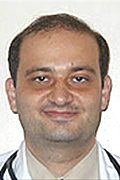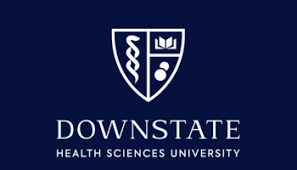Meet your Preceptor:

Aleksandr Gleyzer, MD
Assistant Professor
Medical School:SUNY Downstate
Graduation Date: 1998
Residency Training: Emergency Medicine – Jacobi Medical center, Internal Medicine Internship – Staten Island University Hospital
Areas of Professional Interest:Emergency Ultrasound & Travel Medicine
Sponsoring department: Emergency Medicine, SUNY Contact person: Tiesha Saunders Telephone number: 245-2975 Email: Tiesha.Saunders@downstate.edu Meeting location/time for Day 1: Via Zoom with Ms. Tiesha Saunders at a time specified at a later date. Course objectives: • Describe the range of clinical conditions encountered in Emergency Medicine • List typical patient presentations encountered • Describe the major procedures performed by EM physicians • Describe the training path required to practice Emergency Medicine • Name a journal in the field and the types of papers published • Identify an active area of research • Describe specific communication skills EM physicians must develop • Discuss an ethical issue specific to the field • Discuss the diagnostic approach to two common patient presentations Schedule: Students will follow an individualized schedule. They MUST contact the administrator in advance (can be up to a month in advance) for their schedule. Students will be assigned to specific areas of different Emergency Departments and will have experience in adult and pediatric areas of a busy city hospital, a University Hospital. Dedicated time will be allocated to conferences, simulation sessions, as well as tape review sessions given by the Emergency Ultrasound Division. Requirements: Students must attend the rotation every day for the full day unless they have prior permission from the supervising attending to be absent. They are required to read in depth about two diseases or clinical problems and be able to discuss them with their supervising attending or resident. Assessment: Students will be assessed by their supervising attendings based on their attendance, professional behavior, self-directed learning, and progress toward achieving the objectives of the rotation. It is expected that the attending will seek input into the assessment from the residents or fellows on the service. It should be emphasized that the students are in the early stages of their training; they should not be held to unrealistic standards of knowledge or clinical proficiency that might be expected of senior students or house officers. Course Learning Objectives: 1. To learn about clinical conditions encountered in Emergency Medicine. 2. Describe major procedures performed in Emergency Medicine 3. Describe training path to practice emergency medicine. Student’s Performance Assessment Methods: Evaluation by attending physicians. Suggested reading: AAMC Careers in Medicine Textbook of Emergency Medicine Levels: Doctor of Medicine Schedule Types: Elective Emergency Medicine Department Course Attributes: Core Year Elective, Emergency Medicine
2.000 Credit hours
Levels: Doctor of Medicine
Schedule Types: Elective
Emergency Medicine Department
Course Attributes:
Core Year Elective, Emergency Medicine
